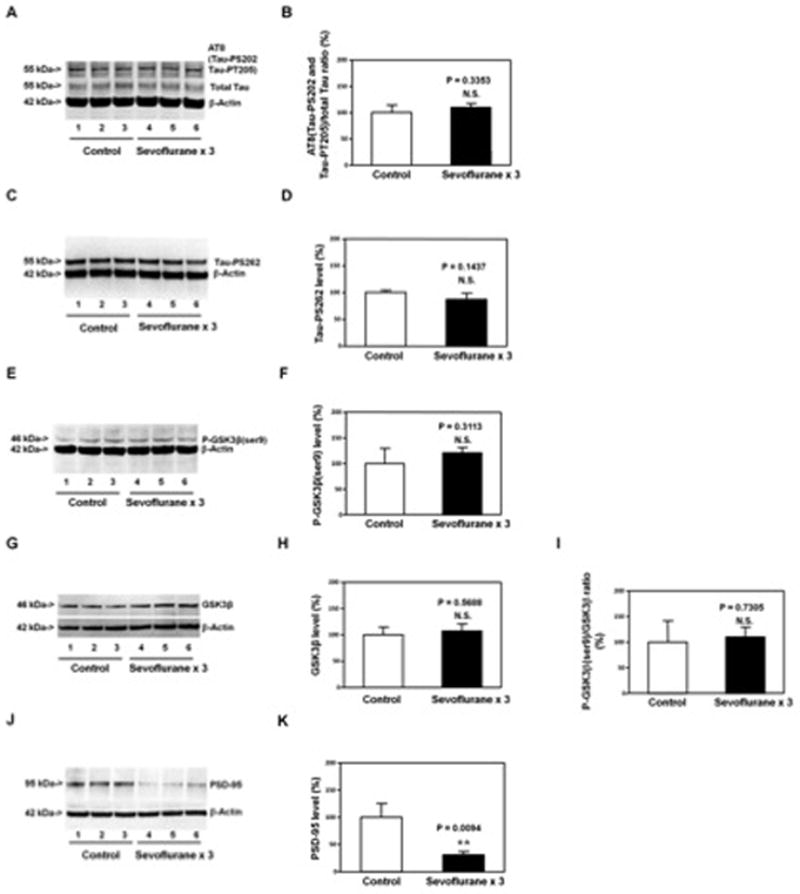Figure 5. Anesthesia with 3% sevoflurane two hours daily for three days in P6 WT mice does not induce Tau phosphorylation or GSK3β activation, but decreases PSD-95 levels in hippocampus of mice at P31.

Anesthesia with 3% sevoflurane two hours daily for three days in P6 WT mice does not significantly affect the levels of AT8(Tau-PS202 and Tau-PT205) and total Tau (A and B), Tau-PS262 (C and D), P-GSK3β(ser9) (E and F), GSK3β (G and H), and the ratio of P-GSK3β(ser9)/GSK3β (I) in the hippocampus of the mice as compared to the control condition at P31. However, the anesthesia with 3% sevoflurane two hours daily for three days at P6 decreases the levels of PSD-95 in the hippocampus of mice as compared to the control condition at P31 (J). There is no significant difference in β-Actin levels in the hippocampus of the mice between the sevoflurane anesthesia and control condition. Quantification of the Western blot (J) shows that the sevoflurane anesthesia at P6 decreases the PSD-95 levels in the hippocampus of mice at P31 (K). P, phosphorylated; Tau-PS202, Tau phosphorylated at serine 202; Tau-PT205, Tau phosphorylated at threonine 205; PSD-95, postsynaptic density-95; GSK-3β, glycogen synthase kinase 3β; ser9, serine 9. N = 6 in each group.
